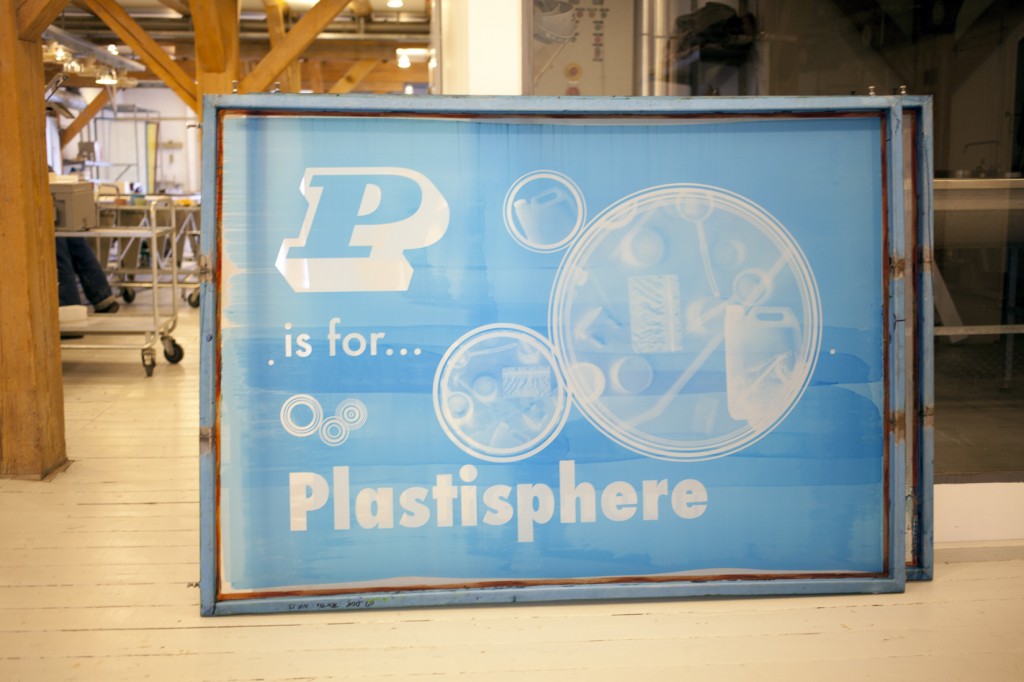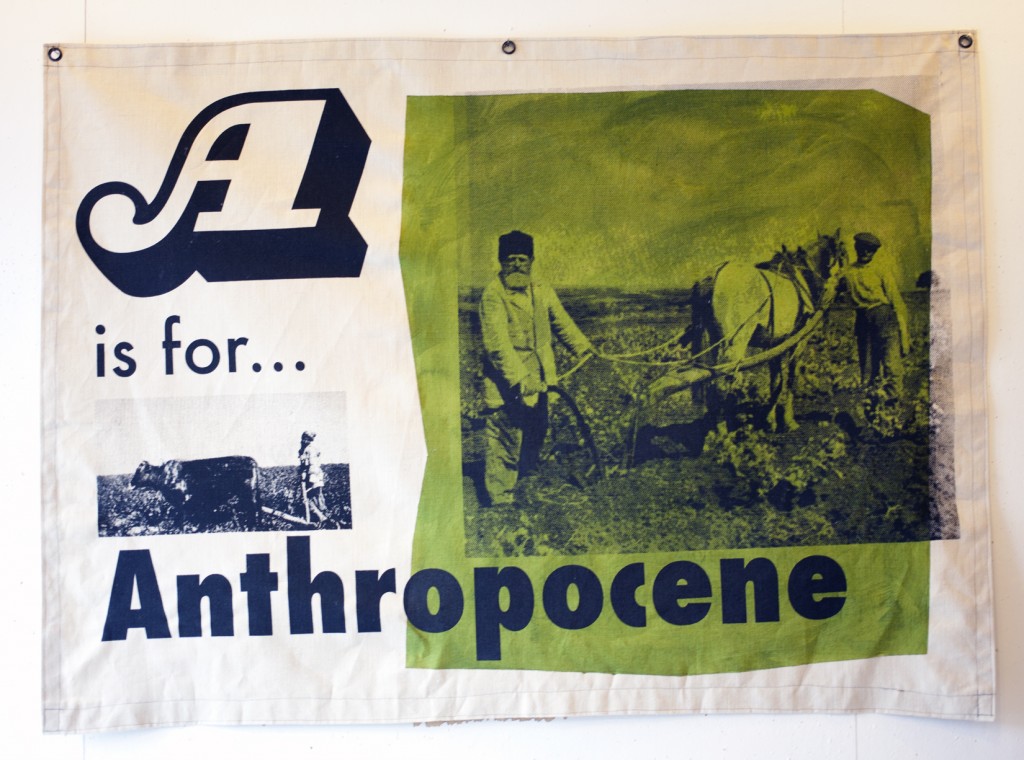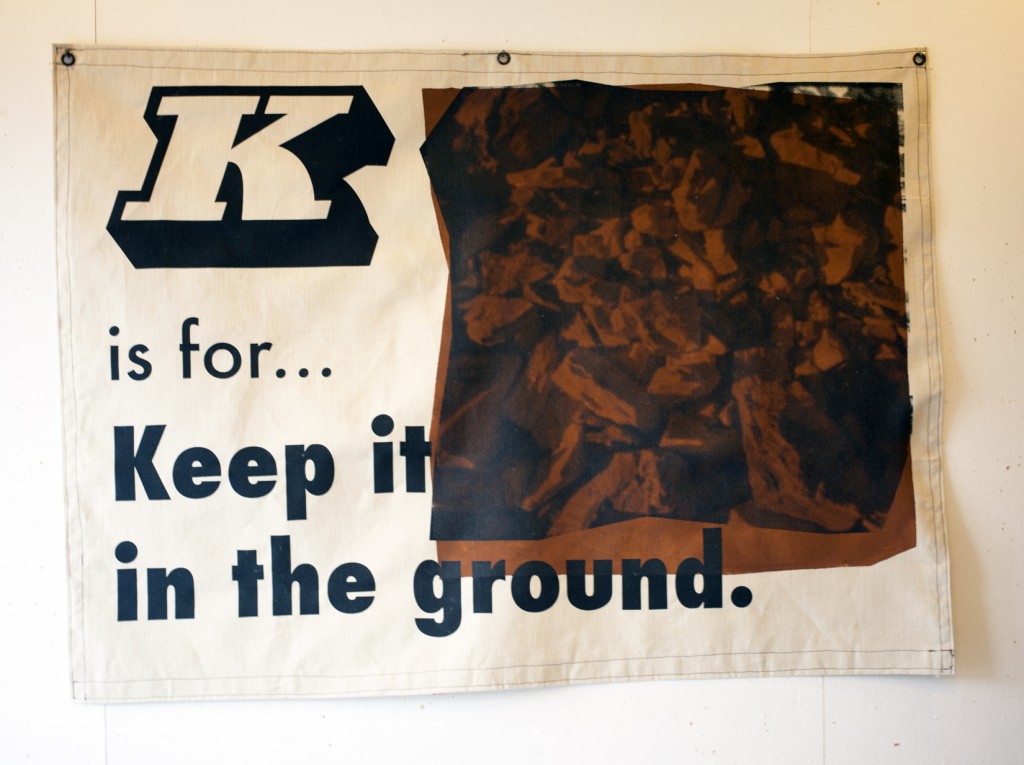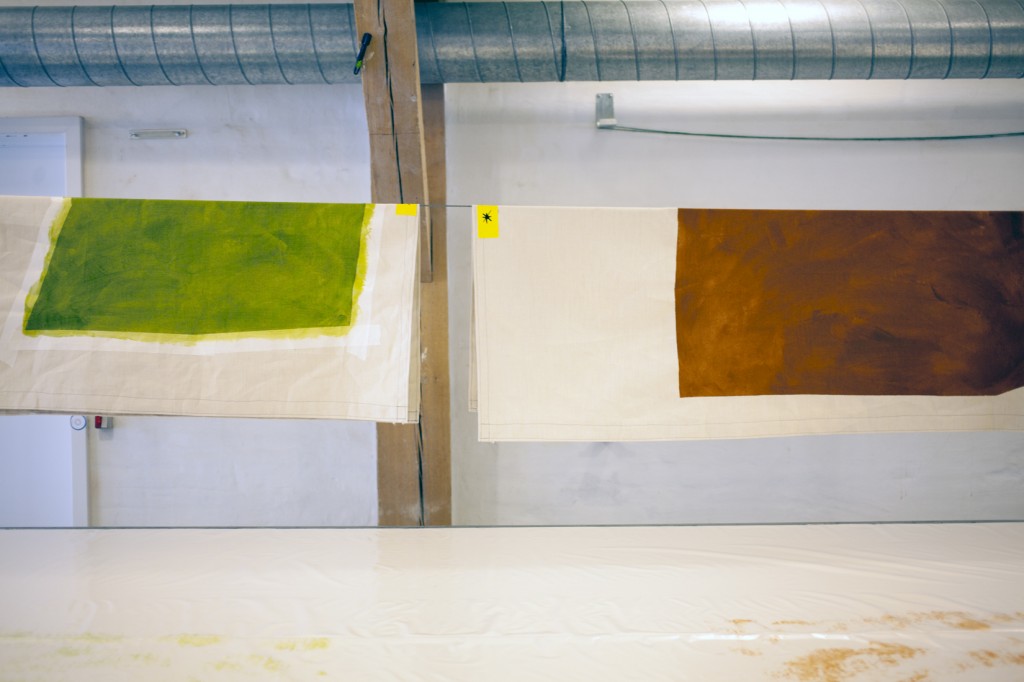A is for Anthropocene
Brett and I have been artists in residency at the Danish Art Workshops (Statens Værksteder for Kunst) for the past several weeks. We are preparing for an upcoming performance project as part of the 2014 Acts Performance Festival at the Roskilde Museum of Contemporary Art. For our project, we decided to expand on an earlier idea–the Powerless Powerpoint–which was inspired by the amazing performers at Bread and Puppet Theater in Vermont.
We think about the Powerless Powerpoint as a slide presentation without electricity, an analog version of the ubiquitous digital technology used in professional life. The digital slides are transformed into portable objects for presentations of information that take on a physical presence beyond the removed glow of a the LCD projector.
Our original version of the Powerless Powerpoint focused on communicating our art practice in a graphic style. The new version is: Alphabet of the Anthropocene and it focuses on defining terms that are part of life in an anthropogenic epoch. The debated but also widely used term Anthropocene describes a new geological era shaped by human society. Human society has had such a decisive and devastating impact on the global environment that scientists have come up with this term to describe that impact. Science reporter, Andew Revkin writing in the New York times describes the Anthropocene thusly:
This is the proposed epoch of Earth history that, proponents say, has begun with the rise of the human species as a globally potent biogeophysical force, capable of leaving a durable imprint in the geological record.
The term is still up for debate but it is being heavily researched and discussed, evidenced by, for example, the new Anthropocene focused research initiative at Aaarhus University in Aarhus, Denmark.
We selected seven letters and made seven slides to describe the various impacts human society is having on the environment. We hope to continue adding to our anthropogenic alphabet in the future, eventually filling out all of the letters in this apocalyptic set of characters. The letters and words/phrases that we produced this time are as follows, with links that help explain each one:
K is for Keep it in the Ground
The Acts 2014 Performance Festival runs from June 14-15, June this summer. The festival is organized by Sanne Kofod Olsen, Mette Truberg Jensen and the Museum for Contemporary Art (Museet for Samtidskunst) in Roskilde with invited curators Judith Schwarzbart, Sanne Krogh Groth, and Rasmus Homboe. Artists include Arendse Krabbe, Sharon Hayes, Andrea Geyer, Anna Lundh, and Ragnhild May among others.
Radio Aktiv Sonic Deep Map (2013)

SUPERKILEN – Extreme Neoliberalism Copenhagen Style

Read Brett's essay about the park.
Download our guide:

This is our guide to how-to books from the counterculture of the 60s and 70s. Click to get the download page.
Categories
- Agriculture (11)
- Animal sounds (1)
- Artist parents (19)
- Arts and culture (106)
- Bees (3)
- Book reviews (14)
- Books (18)
- Critical essays (5)
- Daily Photo (5)
- Design (36)
- Dirt (11)
- Environmental activism (43)
- Exhibitions (24)
- Farms (11)
- Forest (7)
- Friday connect (15)
- Growing (42)
- Habitat (38)
- Homesteading (16)
- Interviews (15)
- Kitchen (14)
- Living structure (9)
- MISC (15)
- Mythological (2)
- Neighborhood (83)
- Ocean News (1)
- Our Art Work (21)
- Personal – Design/Art (3)
- Play (2)
- Playground (4)
- Projects (21)
- Public space (53)
- Resilience (13)
- Sea Side (2)
- Sojabønner (2)
- Tofu (8)
- Vermont correspondence (7)
- Water (3)
- Wednesday picture (31)
- Workshop (1)
Video interview:

Watch our interview of SeedBroadcast, a mobile project that is part seed library and part seed-saving-story-collecting machine-recording the stories of seed saving, farming, and food sovereignty work being done around the US.

Download a poster Bonnie made about biodiversity in a vacant lot in the Amager borough of Copenhagen, in collaboration with biologist, Inger Kærgaard, ornithologist, Jørn Lennart Larsen and botanist, Camilla Sønderberg Brok: A BRIEF TAXONOMY OF A LOT

We made and installed a network of bat houses in Urbana, Illinois, to support the local and regional bat population, but also to begin a conversation about re-making the built environment.
READ MORE
BOOK REVIEW:

We write often about artists and art groups that work with putting ‘culture’ back in agriculture. Here is a new favorite: myvillages, a group of three women based in Germany, the Netherlands, and the UK. Read more...

Post Revolutionary Exercises
We really admire the dedicated hard work of Kultivator who seeks to fuse agriculture and art in their work. Click this sentence to get a PDF of their poster collection called "Post Revolutionary Exercises."

Cultural Practices Within And Across
This amazing book networks urban and rural resilience and sustainability projects around the world. Deeply inspiring projects in Romania, Paris, San Francisco, and elsewhere.
• Read our review of the book.
• Buy the book.
• Download the book.












